Historical society showcases 'Life on the Wallkill'
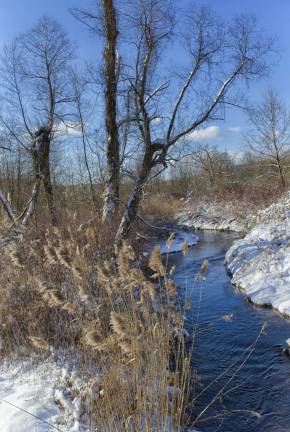
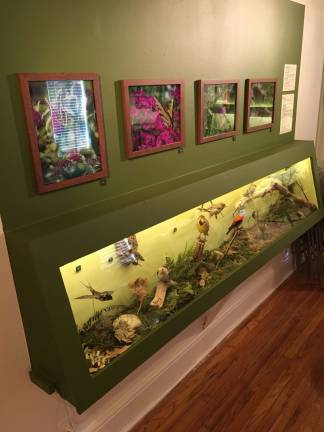
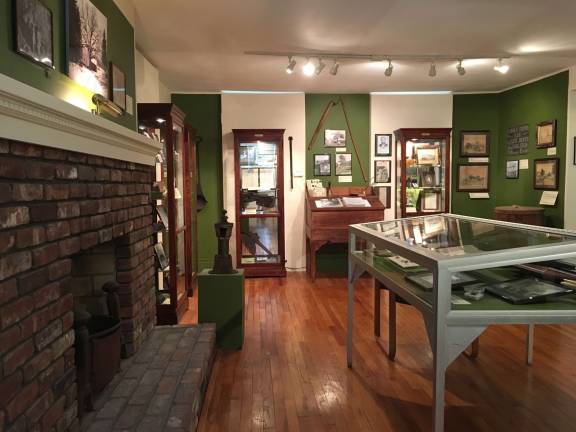
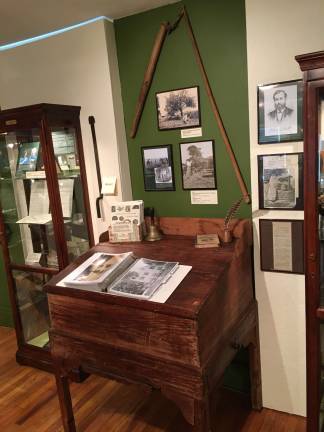
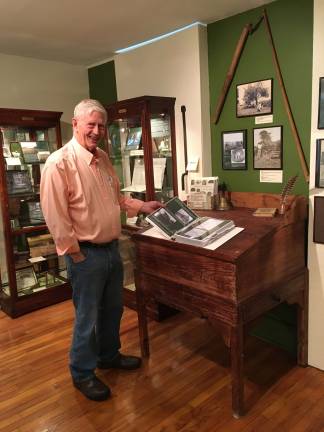
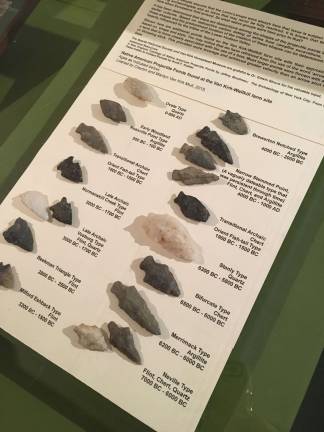
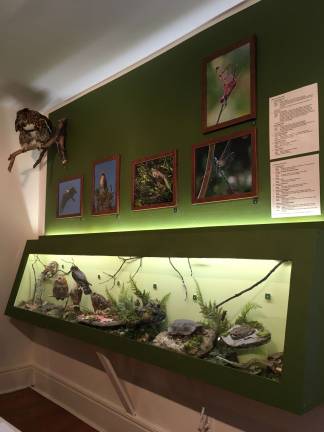
By Amy Shewchuk
SPARTA — The Sparta Historical Society’s Spring Exhibit entitled “Life on the Wallkill” is on display at the Van Kirk Homestead Museum. The exhibit narrates and illustrates the history of Sparta in relation to one of the area’s most precious resources; the Wallkill River. This stunning exhibit contains artifacts, photographs and animal mounts that tell a story about Sparta’s connection with native inhabitants, settlers, businesses, railroads and industries that grew Sparta and surrounding communities.
“This is the most complex exhibition we have ever mounted because of the numerous lenders and sources for the objects displayed,” said Jack Clark, museum director. “It also integrates numerous pieces from our own collection that have been given since we opened in September 2014. It was fun putting it together in a context we haven’t explored before. Crucial to this was my assistant curator, Pat Galperin, who was involved in every step as the exhibit was developed.”
The exhibit represents roughly 12,000 years of history on the Wallkill. The historical society obtained very fine quality animal mounts from different collectors that highlight local wildlife of the past and present, including a stunning black bear mount at the entrance lent from the Walpack Inn and an exquisite mount of a Great Horned Owl, perched to prey.
The earliest items date back to the last Ice Age including a Mastodon tooth, tusk and leg bone, from an ancient relative of the elephant that roamed throughout the region. Clark noted that “as the ice that covered the Sparta area some 10,000 to 12,000 years ago began to melt, it created bogs and marshes that entrapped heavy Mastodons.”
Clark speculated that there might be other bones and things buried in Brogden Meadow where Lake Mohawk was created.
"We will never know but it is an interesting thought,” he said.
The exhibit also contains arrowheads, projectile points and artifacts from the Lenni-Lenape and other native cultures who seasonally hunted animals and gathered fruits and nuts along the Wallkill. The projectile points shown are from the Van Kirk/Wallkill site located right on the property and date back to 7,500 BC. Also showcased are handwritten letters from or to Robert Ogden (dated 1756-1758) regarding his local production of vinegar and hard cider, as well as photos of the mining industry as it boomed, local minerals and antique tools that evolved with the times.
Like the story of the exhibit, the Van Kirk Homestead is also evolving. Through recent and ongoing renovations it has truly become a beautiful, historical icon for the township. Future plans include a “History of Mining in Sparta” and the recreation of the Homestead’s kitchen, both in the basement, as well as expanding transportation exhibits in the newly restored Carriage Barn. Clark added that “all of this has been made possible by a truly dedicated group of volunteers, members, and donors, and community groups like the Eagle Scouts. Numerous small businesses and large corporations throughout the region have also shared our vision. We are very fortunate and grateful for all of the support we have received.”
“Life Along the Wallkill” is currently on display. The museum is located at 336 Main Street Sparta (Rt. 517, use Middle School Driveway). It will be open Sundays May 13, May 27, June 10 and June 24 from 1-4 pm with a 2 pm talk. For further details or group reservations call (973) 726-0883 or email: spartahistoricalsocnj@gmail.com
Moreover, the historical society’s second in its garden series of lectures is scheduled for Thursday, May 10 with guest, Jeannie Geremia, VP of NJ Garden Clubs talking about “creating a pollinators garden.” A plant sale by Nestors Greenhouse will precede the talk. The presentation will take place at the First Presbyterian Church, at 32 Main Street, Sparta. The plant sale begins at 6 pm, followed by Geremia's lecture on pollinators, to run from 7 pm to 8:30 pm, with the opportunity to ask questions. Light refreshments will be served following the presentation. Pollinators are Geremia's passion and she is notable for and instrumental in the naming of the Black Swallowtail as New Jersey State Butterfly a few years ago. She also leads, inspires and provides education and outreach opportunities on the importance of pollination and wildlife habitat gardens. All home gardeners or want-to-be home gardeners are encouraged to attend.
Society members are free, non-members $5. The last of the series, Summer Afternoon Garden Soiree, will be held June 21 at the Van Kirk Homestead with light refreshments and a tour of the Sparta Community Gardens, herb garden and certified butterfly garden.
For more information on the Sparta Historical Society, visit their new website at <URL destination="http://www.vankirkmuseum.org ">www.vankirkmuseum.org